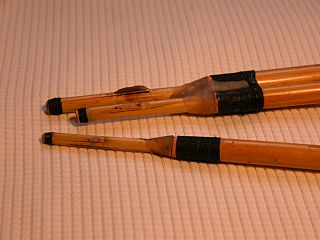
Nuoro is a city and comune (municipality) in central-eastern Sardinia, Italy, situated on the slopes of the Monte Ortobene. It is the capital of the province of Nuoro. With a population of 36,347 (2011), it is the sixth-largest city in Sardinia.

Sardinian or Sard is a Romance language spoken by the Sardinians on the Western Mediterranean island of Sardinia.

Sardinia is the second-largest island in the Mediterranean Sea, after Sicily, and one of the 20 regions of Italy. It is located west of the Italian Peninsula, north of Tunisia and immediately south of the French island of Corsica.

Campidanese Sardinian is one of the two written standards of the Sardinian language, which is often considered one of the most, if not the most conservative of all the Romance languages. The orthography is based on the spoken dialects of central southern Sardinia, identified by certain attributes which are not found, or found to a lesser degree, among the Sardinian dialects centered on the other written form, Logudorese. Its ISO 639-3 code is sro.

The launeddas are a traditional Sardinian woodwind instrument made of three pipes, each of which has an idioglot single reed. They are a polyphonic instrument, with one of the pipes functioning as a drone and the other two playing the melody in thirds and sixths.
Italian folk music has a deep and complex history. National unification came quite late to the Italian peninsula, so its many hundreds of separate cultures remained un-homogenized until quite recently. Moreover, Italian folk music reflects Italy's geographic position at the south of Europe and in the center of the Mediterranean Sea: Celtic, Slavic, Arabic, Greek, Spanish and Byzantine influences are readily apparent in the musical styles of the Italian regions. Italy's rough geography and the historic dominance of small city states has allowed quite diverse musical styles to coexist in close proximity.

The cantu a tenòre is a style of polyphonic folk singing characteristic of the island of Sardinia, particularly the region of Barbagia, though some other Sardinian sub-regions bear examples of such tradition.
This is an article on the terminology used to describe the music of Italy. There is also an article on Italian musical terms used in English.

Tenore di Bitti "Mialinu Pira" is an Italian ensemble formed in 1995, specialized in the Sardinian cantu a tenore. The Cantu a tenore is a style of polyphonic folk singing characteristic of the Barbagia region of the island, even though some other Sardinian sub-regions bear examples of such tradition. The cantu a tenore was proclaimed by the UNESCO "Masterpieces of the Oral and Intangible Heritage" in 2005.
Gerolamo Araolla, also known as Hieronimu Araolla, was a Sardinian poet and priest.

The Sardinians, or Sards, are a Romance language-speaking ethnic group native to Sardinia, from which the western Mediterranean island and autonomous region of Italy derives its name.
A mutu is a type of improvised sung poetry found in Sardinia. These are traditionally sung mostly by women in response to the male. This type of improvisation called battorinas.
Giovanni Lilliu, was a renowned archeologist, academician, publicist and politician and public figure and an expert of the Nuragic civilization. Largely due to his scientific and archeologic work in the Su Nuraxi di Barumini in Sardinia, Italy, the site was inscribed on the UNESCO list of World Heritage Sites in 1997.

The literature of Sardinia is the literary production of Sardinian authors, as well as the literary production generally referring to Sardinia as argument, written in various languages.
The cantu a chiterra is a typical Sardinian form of monophonic singing in Sardinian language and Gallurese, accompanied by a chiterra sarda, or Sardinian guitar. This type of song is particularly prevalent in the northern part of the island; in particular in the Logudoro, Goceano, Planargia and Gallura. Very likely, some of the songs existed before the invention of the guitar, for example, Cantu in re , but with the advent of the instrument they have developed different variations.
Su patriotu sardu a sos feudatarios, widely known also by its incipit as Procurade 'e moderare, is a protest and antifeudal folk song in the culture of Sardinia.

S'hymnu sardu nationale, also known as Cunservet Deus su Re, was the national anthem of the Kingdom of Sardinia under Savoyard rule.
The Deus ti salvet Maria is a devotional song belonging to the Sardinian tradition of the Gosos, written in Sardinian language in the 18th century by the poet Bonaventura Licheri . The lyrics were translated around 1725; the oldest transcription is the one of Maurizio Carrus, who had inserted it as an appendix in the Rosary of San Vero Milis in 1731. The Laude is sung in the form of the gosos, a typical devotional song widespread in Sardinia.
The gosos or goccius are a kind of devotional and paraliturgical songs of Iberian origin typical of Sardinia, and written in the Sardinian language.

The Sardinia national football team is the official football team of Sardinia. It is organised by the Sardinian National Sports Federation, founded in 2012. The team has been colloquially referred with the name Sa Natzionale.











